Key takeaways:
- Wallet scams often involve phishing, fake applications, and “dusting attacks” that target users’ private keys and activity.
- Red flags include unsolicited messages, lack of transparency, and unrealistic promises of returns, which should prompt further investigation.
- Using reputable platforms with strong security measures like two-factor authentication and regulatory compliance is essential for protecting assets.
- Regularly updating wallet software, enabling biometric security features, and maintaining secure backups are crucial for wallet safety.
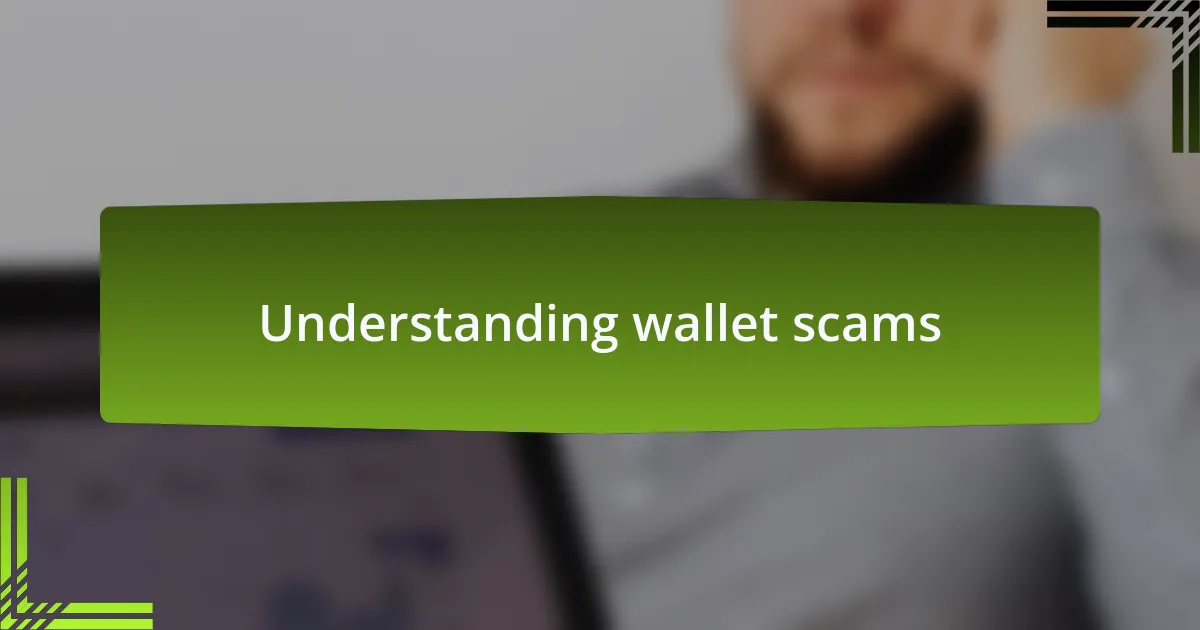
Understanding wallet scams
Wallet scams are deceptive schemes designed to exploit users looking to store or manage their cryptocurrency securely. I’ve had moments where the shiny allure of new wallets almost pulled me in, only to realize later that they were fronts for phishing. How often do we chase after innovations, only to overlook basic security checks?
Many scammers create fake wallet applications or websites that look very convincing, often leading unsuspecting users to enter their private keys. I remember the skepticism I felt when a supposedly revolutionary wallet promised “unmatched security” but required more personal info than I felt comfortable sharing. Isn’t it alarming how quickly our excitement can blind us to potential threats?
Understanding the mechanics of these scams is crucial for protecting your assets. I learned to always do my due diligence—checking user reviews and verifying the developer’s background. Have you ever paused to question the legitimacy of a wallet before jumping in? Taking that extra moment can be the difference between safeguarding your investments and becoming a victim of fraud.
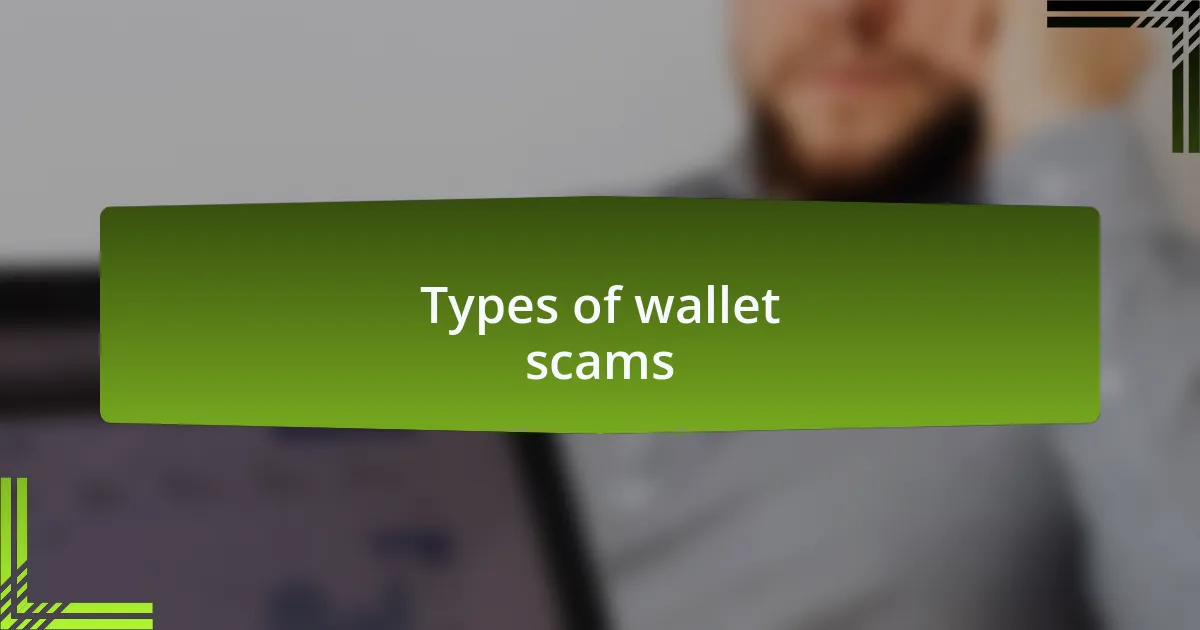
Types of wallet scams
When discussing wallet scams, one prevalent type is the phishing scam. I recall a time when I received an email that appeared to be from a well-known wallet service. It was so convincing that I almost clicked the link, but a gut feeling held me back. Have you ever stopped to think about what could happen if you fell for such tricks? You could unwittingly hand over your private keys to scammers, losing everything you’ve worked for in an instant.
Another common scam is the “dusting attack.” In this scenario, scammers send a small amount of cryptocurrency to a wallet in an attempt to play the long game. They monitor the wallet’s activity and eventually try to steal larger sums or compromise the user’s privacy. I remember experimenting with a new wallet only to notice unexpected small transactions. It sends a shiver down my spine, thinking that my activity was being tracked. Isn’t it unsettling to know that even the smallest transaction could attract unwanted attention?
Lastly, there are fake wallets that masquerade as official apps or extensions. I once stumbled upon a wallet that boasted extraordinary features but lacked any online presence aside from their dubious claims. It made me think—how often do we get lured in by promises that sound too good to be true? If the wallet isn’t discussed in reputable forums or lacks a transparent support system, that should raise some red flags. Always trust your instincts when navigating this digital terrain; those instincts could save you from a costly mistake.
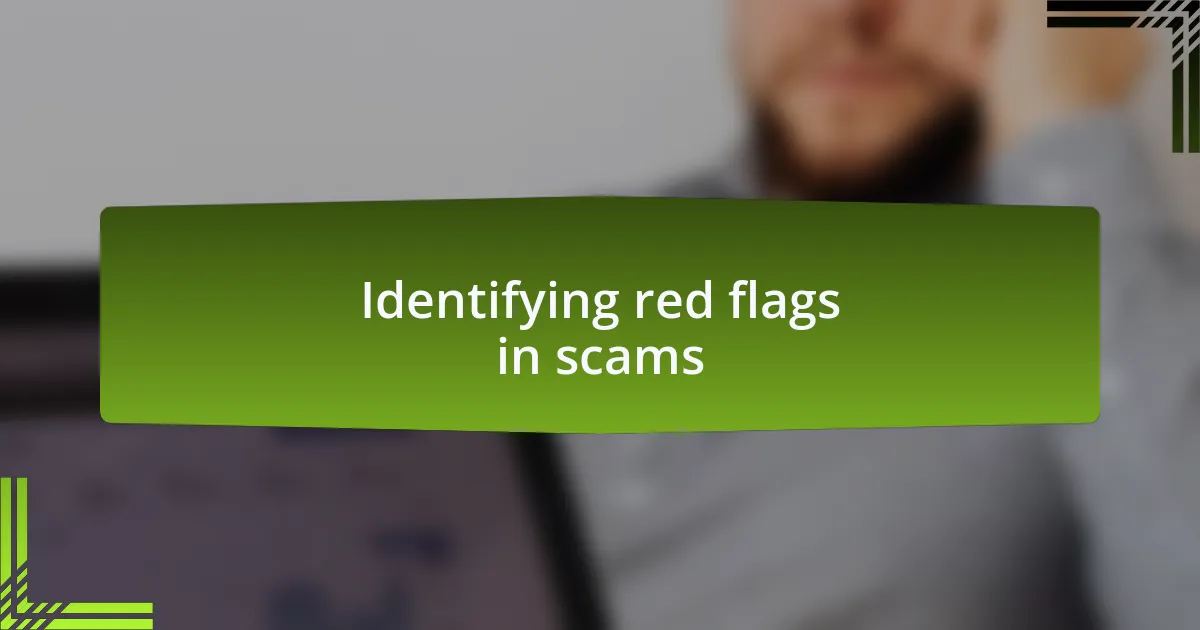
Identifying red flags in scams
Identifying red flags in scams is crucial for protecting your assets. For instance, if you receive unsolicited messages claiming there’s a problem with your wallet, it’s a glaring warning sign. I once received a message telling me to urgently verify my account details. The sheer urgency made my heart race, but upon reflection, I realized that genuine services don’t pressure users with such tactics. Have you ever felt that rush of panic when faced with an alarming message? It’s important to take a step back instead of jumping in.
Another red flag is the lack of transparency in a wallet’s operations. I remember looking into a new service and finding their website full of vague information, with no clear team or history behind it. When an organization hides behind anonymity, I can’t help but wonder—what are they trying to hide? If you can’t find adequate information about the developers or their track record, it’s wise to rethink your options.
Lastly, be cautious of wallets that promise guaranteed returns or seem overly complex. I once encountered an app that promised incredible gains with minimal effort—sounded tempting, right? But it made me question: if it were that easy, wouldn’t everyone be doing it? Always remember that if something seems too good to be true, it probably is. Staying vigilant can help you steer clear of potential scams and keep your investments safe.

Choosing a secure cryptocurrency platform
When I consider choosing a secure cryptocurrency platform, I always start by researching its reputation. A platform with a strong track record and positive user reviews gives me a sense of confidence. Have you ever found comfort in a product because of glowing recommendations? It’s definitely something I value when I want to avoid potential pitfalls in my cryptocurrency journey.
Additionally, I pay close attention to the security measures a platform has in place. For instance, I chose a platform that employs two-factor authentication (2FA). The extra layer of protection eased my mind, especially when I remember the anxiety I felt during my first transactions. I can’t stress enough how crucial it is to look for features like 2FA, encryption, and regular security audits.
Moreover, I advise examining the regulatory compliance of the platform. When I first delved into cryptocurrency, I overlooked this aspect and later regretted it. Knowing that a platform adheres to regulations helps ensure that they are held accountable for their actions. It’s definitely worth asking yourself: do you want to trust a platform that operates in a gray area? I prefer the peace of mind that comes from knowing I’m working with a legitimate service.
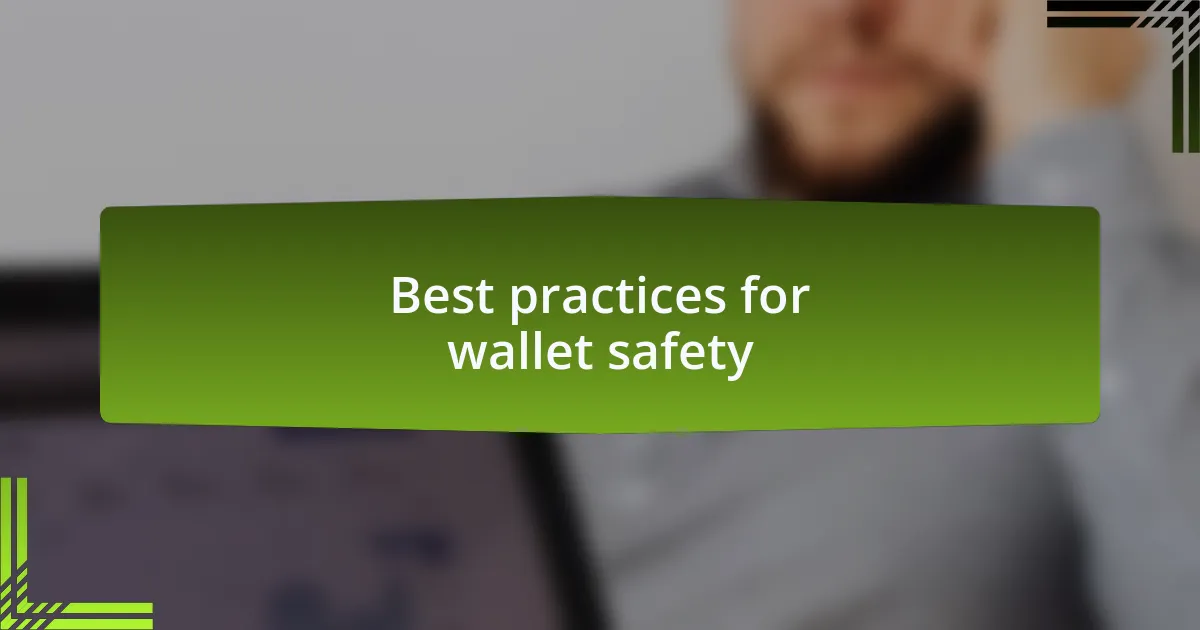
Best practices for wallet safety
When it comes to wallet safety, I always make it a priority to enable additional security features like biometric authentication when available. I still remember the relief I felt the first time I unlocked my wallet with my fingerprint instead of a password. It made me think about how simple yet effective safeguards can significantly enhance my sense of security. Have you ever hesitated before entering a password, wondering if it might be your undoing?
Another practice I swear by is keeping my wallet software up to date. After a friend of mine faced a nasty hack due to outdated software, I learned my lesson the hard way. Now, whenever I see an update notification, I don’t just hit ‘remind me later’—I jump on it immediately. It’s fascinating how staying proactive can save you from potential disaster.
Lastly, I always recommend backing up my wallet and keeping that backup in a secure place. On one occasion, I accidentally deleted my wallet app, and it was a heart-stopping moment until I remembered I had a backup stored safely. Trust me, that experience cemented the importance of having a contingency plan. Have you thought about what you would do if you lost access to your wallet?
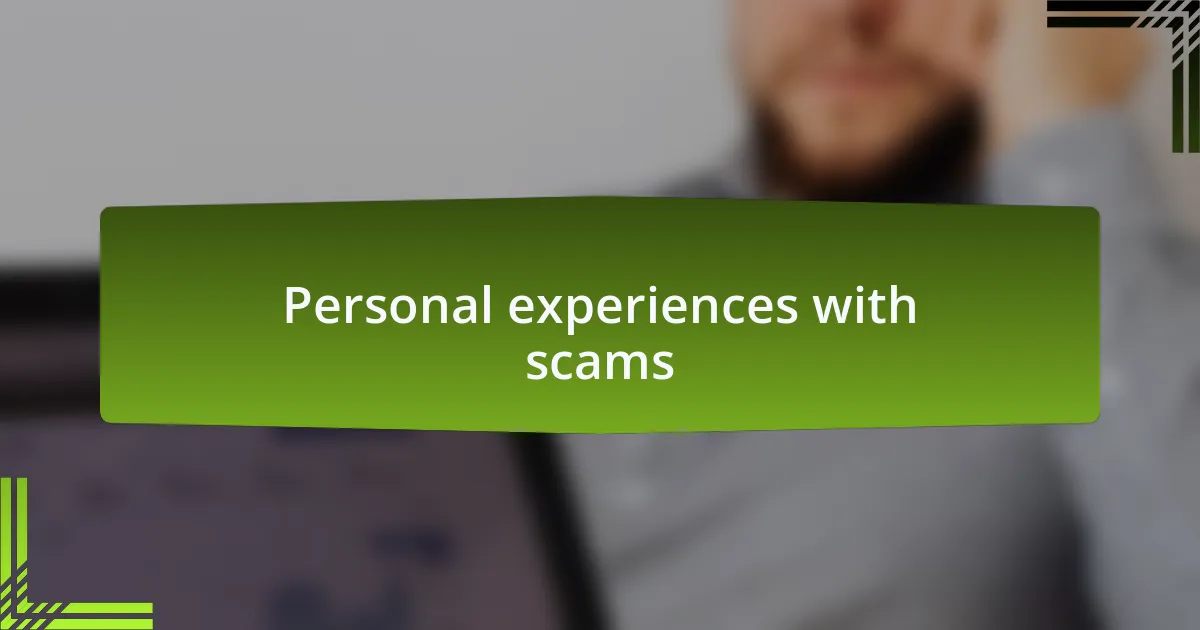
Personal experiences with scams
When I first started exploring cryptocurrency, I became a target for scams I couldn’t see coming. One time, I received a phishing email that looked legitimate, complete with official logos and professional language. I almost clicked the link until a nagging feeling stopped me—what if this was a trap? That pause saved me from potentially losing my hard-earned savings.
Another close call happened at a crypto exchange during a busy weekend. Amid the excitement, I overlooked urgent security alerts about abnormal activities on my account. It wasn’t until a friend reached out that I realized my account was likely compromised. The sheer panic I felt in that moment reminded me how crucial it is to stay vigilant and continuously monitor my accounts.
I vividly recall a moment when I thought I was being clever by using a new wallet app that promised better rewards. Instead, I discovered too late that it was a fake site designed to harvest users’ information. The embarrassment and helplessness of that experience taught me an invaluable lesson: always do thorough research before trusting a new platform. Have you ever rushed into something, only to wish you had taken a moment to investigate?